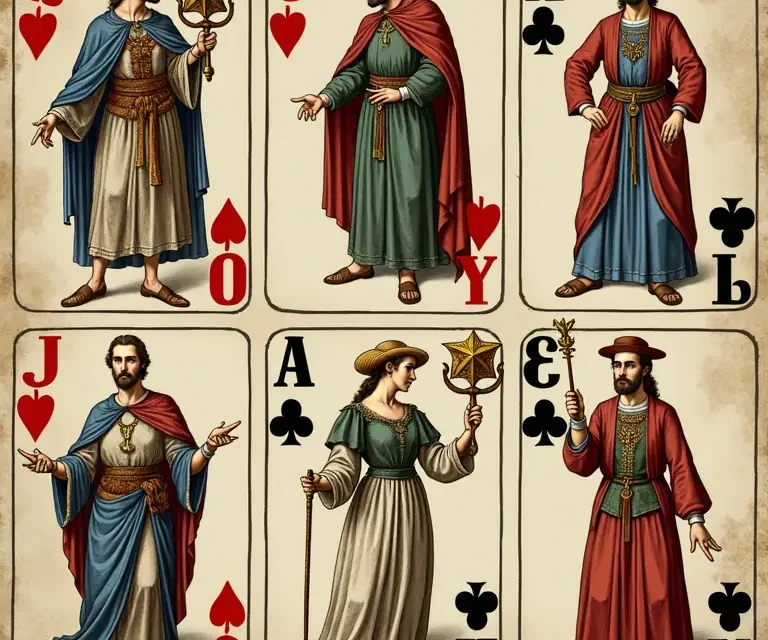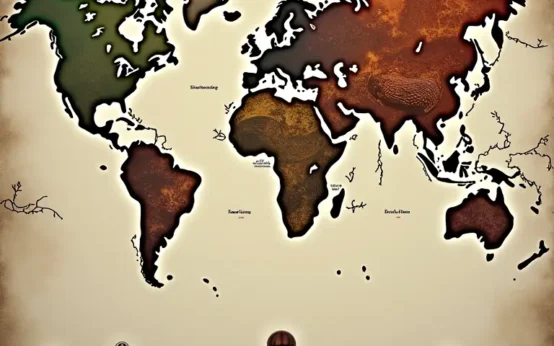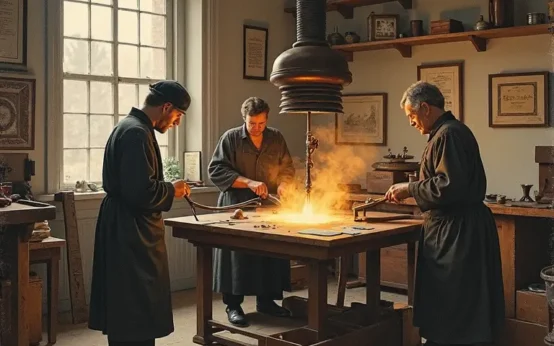Playing cards. A seemingly simple pastime, enjoyed globally for centuries. Yet, beneath the colorful faces and engaging gameplay lies a rich tapestry of history, symbolism, and surprisingly consistent meaning. From their origins in China to their evolution in Europe, early playing cards weren’t just about luck; they were imbued with social, religious, and philosophical significance. This article delves into the fascinating world of early card symbolism, exploring the origins of suits, the meaning of numbers, and the hidden layers that made these cards far more than just a game.
Origins and Early Development
The generally accepted consensus places the origins of playing cards in China during the Tang Dynasty (618–907 AD). These early cards weren’t quite the cards we know today. They were more akin to dominoes, used for a variety of games, including those involving divination. The cards were typically made of pasteboard and featured images representing various categories – often related to social classes or occupations.
From China, the concept spread along the Silk Road, reaching Persia and then the Mamluk Sultanate of Egypt by the 14th century. Egyptian Mamluk cards, known as na’ib, are particularly important as they represent a crucial link in the transmission of card games to Europe. These cards featured four suits: polo sticks (mallets), coins, swords, and cups – a configuration that would profoundly influence European card decks.
The Arrival in Europe and the Establishment of Suits
European playing cards appeared in the late 14th century, likely introduced through Italy and Spain. The suits, however, underwent a transformation. The Mamluk suits were adapted to reflect European society and heraldry. Polo sticks became batons (or staves), coins remained largely unchanged, swords evolved into swords (sometimes spades), and cups became chalices (or hearts). A fourth suit, often depicted as hunting horns or leaves, eventually solidified as clubs. This standardization, while not immediate, was crucial in establishing the familiar four-suit system we recognize today.
The early European cards weren’t simply copies of the Mamluk decks. They were imbued with new layers of meaning, reflecting the social and religious beliefs of the time. The suits were frequently associated with the medieval social hierarchy.
- Hearts: Represented the clergy – the most powerful and revered social class. Love, compassion, and spiritual understanding were naturally associated with this suit.
- Spades: Symbolized the nobility – the warrior class, often associated with courage, honor, and sometimes, death. The shape of the spade itself resembles the head of a sword or spear.
- Clubs: Represented the peasantry – the working class, connected to the land and agriculture. The club shape may have originally been a leaf, symbolizing growth and fertility.
- Diamonds: Symbolized the merchant class – the rising economic power, associated with wealth, trade, and material possessions. The diamond shape itself is often linked to land ownership.
This association with social classes wasn’t accidental. Cards were often used in social settings, and their symbolism reinforced existing power structures and societal norms. Understanding these associations provides a key to unlocking the deeper meaning embedded within the cards. This is a pattern we see repeatedly throughout history; the consistent use of symbolic representation to reinforce existing societal structures, a concept similar to what we see in /the-surprisingly-consistent-logic-of-ancient-boarding-house-rules-social-order-domestic-governance/.
The Significance of Numbers
The numerical values on playing cards weren’t arbitrary either. They were often derived from numerological traditions and carried symbolic weight. The number system used in early cards was typically based on the Western tradition, influenced by Greek and Roman numerology.
- Ace: Often represented unity, divinity, and the beginning of all things. It could also symbolize opportunity and potential.
- Two: Represented duality, balance, and partnership. It symbolized opposition and the need for compromise.
- Three: Represented harmony, completion, and creativity. It was often associated with the Holy Trinity in Christian symbolism.
- Four: Represented stability, structure, and the material world. It was linked to the four elements – earth, air, fire, and water.
- Five: Represented change, conflict, and challenge. It symbolized the instability inherent in life.
- Six: Represented harmony, love, and responsibility. It symbolized balance and cooperation.
- Seven: Represented spirituality, intuition, and introspection. It was often associated with mysticism and the search for meaning.
- Eight: Represented abundance, power, and control. It symbolized ambition and material success.
- Nine: Represented completion, fulfillment, and wisdom. It symbolized the culmination of a journey.
- Ten: Represented perfection, completion, and the end of a cycle. It symbolized the fulfillment of destiny.
The combination of suit and number created a complex system of symbolism. For example, the Ten of Hearts could represent complete love and fulfillment, while the Five of Spades could signify conflict and loss within the nobility. This nuanced symbolism allowed for a range of interpretations, making card games more than just a test of chance.
Court Cards and Their Allegorical Representations
The introduction of court cards – King, Queen, and Jack (originally Knave) – added another layer of complexity to card symbolism. These cards weren’t simply representations of royalty; they were often allegorical figures embodying specific virtues or vices.
- King: Represented authority, leadership, and power. He embodied masculine energy and rational thought.
- Queen: Represented intuition, compassion, and nurturing. She embodied feminine energy and emotional intelligence.
- Jack (Knave): Represented youth, agility, and sometimes, trickery. He embodied impulsive energy and potential for growth.
The specific depictions of the Kings and Queens also held significance. They were often modeled after historical figures or mythological characters, further enriching their symbolic meaning. For example, the King of Hearts was often associated with Charlemagne, representing chivalry and justice. The Queen of Spades was often depicted as a dark or mysterious figure, symbolizing fate and destiny.
The Influence of Alchemy and Astrology
The symbolism of playing cards was also deeply influenced by alchemy and astrology, two prominent intellectual currents in medieval and Renaissance Europe. The four suits were often linked to the four elements (as mentioned previously), which were central to alchemical and astrological theories. Each suit also corresponded to a specific season, temperament, and even body fluid.
- Hearts: Fire, Summer, Choleric (hot and dry), Blood
- Spades: Air, Autumn, Melancholic (cold and dry), Black Bile
- Clubs: Earth, Winter, Phlegmatic (cold and wet), Phlegm
- Diamonds: Water, Spring, Sanguine (hot and wet), Yellow Bile
These correspondences weren’t merely academic exercises. They reflected a holistic worldview, where everything in the universe was interconnected and influenced by cosmic forces. The cards, therefore, weren’t just a game; they were a microcosm of the universe, reflecting its inherent order and harmony. The consistent association of color with symbolic meaning is a recurring theme in history, as demonstrated in /the-surprisingly-consistent-use-of-color-in-ancient-pottery-pigments-trade-and-symbolic-meaning/.
Divination and the Rise of Tarot
The symbolic richness of playing cards naturally led to their use in divination. While not all early card games were intended for fortune-telling, the association gradually grew stronger. In the 15th century, the Italian Renaissance saw the emergence of Tarot cards, which were initially used for a game called *tarocchi*. However, Tarot quickly became associated with esoteric traditions and developed into a powerful tool for divination.
Tarot cards expanded upon the symbolism of traditional playing cards, adding a series of trump cards (Major Arcana) representing archetypal figures and life lessons. The Tarot deck retained the four suits of the traditional card deck, but infused them with even deeper layers of meaning. The connection between Tarot and Jungian archetypes is particularly insightful.
The Enduring Legacy of Card Symbolism
Even as the original meanings of the suits and numbers faded from conscious awareness, the symbolism of playing cards continued to exert a subtle influence on culture and imagination. The cards became a source of inspiration for artists, writers, and filmmakers. The archetypal characters and themes depicted on the cards resonated with audiences across generations.
Today, while most people play cards for entertainment, the historical and symbolic depth of these seemingly simple objects remains remarkably compelling. Understanding the origins of card symbolism allows us to appreciate the cards not just as a game, but as a reflection of the human condition – our hopes, fears, and aspirations. The consistent need to understand and predict the future, as evidenced by the use of proverbs and folklore, is mirrored in the divination practices associated with cards. See /the-surprisingly-consistent-logic-of-traditional-weather-proverbs-folklores-forecasts-atmospheric-science/ for a similar exploration of predictive practices.
The evolution of timekeeping also demonstrates a consistent human desire for order and understanding, much like the structured symbolism of playing cards – explore /the-surprisingly-consistent-evolution-of-clockmaking-from-water-clocks-to-atomic-precision/ to learn more.
Finally, the preservation of food, a fundamental human need, showcases a consistent application of scientific principles throughout history, parallel to the consistent symbolic logic embedded in playing cards. Consider /the-surprisingly-consistent-science-of-historical-food-preservation-from-salting-to-spice-a-quest-for-sustenance/ for a fascinating look at this.
The story of playing cards is a testament to the enduring power of symbolism and the human fascination with meaning. From their humble beginnings in China to their global popularity today, these cards continue to captivate and intrigue, reminding us that even the simplest of objects can hold profound secrets.


 The Curious Acoustics of Historical Echo Chambers: Resonance, Ritual, and Revelation
The Curious Acoustics of Historical Echo Chambers: Resonance, Ritual, and Revelation  The Curious Cartography of Scent: Mapping Perfume Ingredients Through History
The Curious Cartography of Scent: Mapping Perfume Ingredients Through History  The Curious Lexicon of Lost Trades
The Curious Lexicon of Lost Trades  The Surprisingly Consistent Symbolism of Antique Fans – Language, Status & Victorian Courtship
The Surprisingly Consistent Symbolism of Antique Fans – Language, Status & Victorian Courtship  The Surprisingly Consistent Science of Historical Ice Harvesting – A Frozen History of Commerce & Preservation
The Surprisingly Consistent Science of Historical Ice Harvesting – A Frozen History of Commerce & Preservation  The Unexpectedly Consistent Science of Historical Buttonhooks – Fashion, Function & Forgotten Tools
The Unexpectedly Consistent Science of Historical Buttonhooks – Fashion, Function & Forgotten Tools